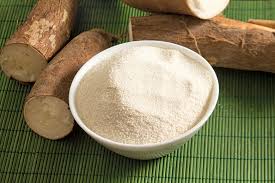Why was cassava used?
The article "Plantation and Provision Ground: An Historical Sketch of the Introduction of Food Crops into Jamaica" discusses how cassava was used out of necessity. I think it is important to mention that indigenous peoples of the Caribbean (Arawaks, Tainos, Caribs) were the first to figure out the laborious process of making cassava flour.

In an article reviewing this cookbook written by Syreeta McFaddenwith for The Atlantic, McFadden, Michelle, and Suzanna Rousseau discuss ground provisions. In this article they highlight cassava specifically, "Cassava, they highlight in the section covering recipes for ground provisions, is native to the region and similar to yam, a food familiar to African slaves. Yet, it was the indigenous communities of the Caribbean, then Rousseaus write, who taught early slaves “methods for its processing and consumption.” For instance, when cassava is grated and dried, it can mimic the qualities of flour. This dried iteration lends itself to bammy, a Jamaican flatbread made from “grated cassava that has been soaked in water, transferred to a cloth, and pressed to extract as much liquid as possible. The cassava is then flattened into a thick, disc-shaped flatbread and cooked over dry heat.” (McFadden, Syreeta. “Uncovering the Roots of Caribbean Cooking.” The Atlantic, Atlantic Media Company, 2 Jan. 2019 www.theatlantic.com/entertainment/archive/2019/01/origins-most-popular-caribbean-foods/579052/.)
Image: Rousseau Michelle, Rousseau Suzanne. Provisions: The Roots of Caribbean Cooking--150 Vegetarian Recipes. 2018. (US)

